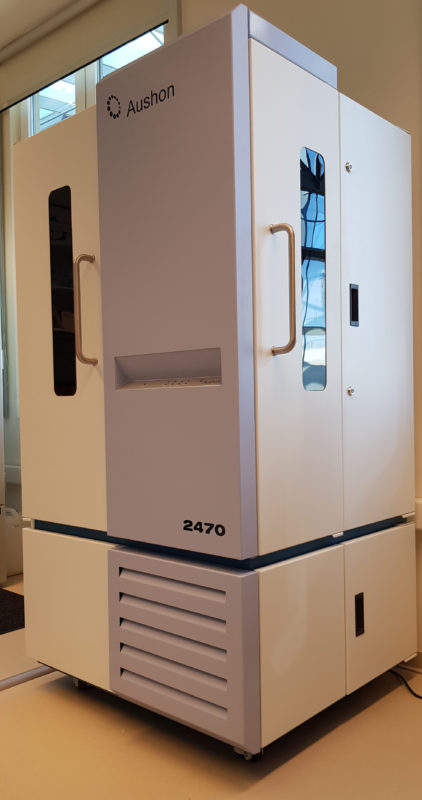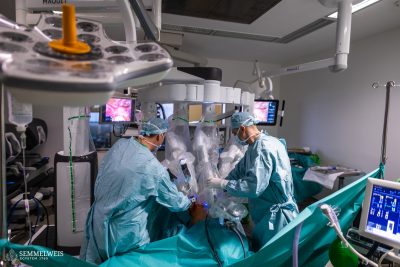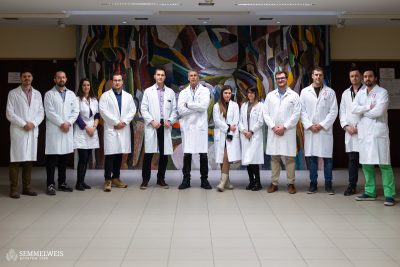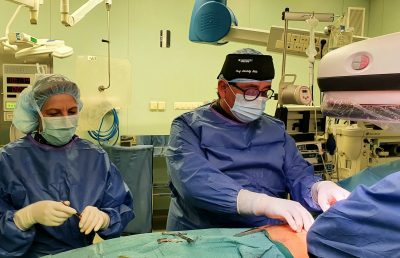 Under the leadership of Dr. Christos Chinopoulos and within the framework of the Széchenyi 2020 program, a Reverse Phase Protein Array platform had been installed by 28 September 2020 at the Department of Biochemistry and Molecular Biology. The devices purchased within the project enable the automated analysis of hundreds of healthy and tumor tissue samples removed during surgeries and the quantification of all their mitochondrial proteins in just a few days. The aim of the project is to analyze the tissue samples from a unique perspective focusing on the detailed study of the mitochondrion, the organelle supplying cells and tumor cells with energy, with the intention of identifying new targets for drug development and therapy. A major advantage of the method is that 400 samples can be analyzed simultaneously with a relatively low cost per sample and using a small sample volume.
Under the leadership of Dr. Christos Chinopoulos and within the framework of the Széchenyi 2020 program, a Reverse Phase Protein Array platform had been installed by 28 September 2020 at the Department of Biochemistry and Molecular Biology. The devices purchased within the project enable the automated analysis of hundreds of healthy and tumor tissue samples removed during surgeries and the quantification of all their mitochondrial proteins in just a few days. The aim of the project is to analyze the tissue samples from a unique perspective focusing on the detailed study of the mitochondrion, the organelle supplying cells and tumor cells with energy, with the intention of identifying new targets for drug development and therapy. A major advantage of the method is that 400 samples can be analyzed simultaneously with a relatively low cost per sample and using a small sample volume.
This RPPA facility is the first in Central and Eastern Europe, which was realized within the project “Strengthening the R&D infrastructure – internationalisation and networking VEKOP-2.3.3-15” supported by the European Union’s grant of 260 million HUF.
The platform also opens up new job opportunities for researchers through new research collaborations and projects.
For more details on the project, visit the website of the RPPA facility and the page of the Department of Biochemistry.
Photos: Featured image (illustration): Semmelweis University –Attila Kovács
Department of Biochemistry and Molecular Biology


